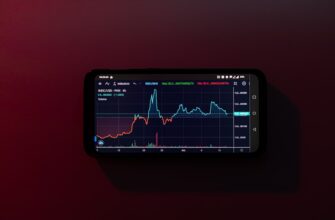- Bitcoin Halving Countdown: Handelsblatt’s Complete Guide to the Next Crypto Milestone
- What Is Bitcoin Halving? The Core Mechanism Explained
- Historical Halvings: Lessons from 2012, 2016, and 2020
- The 2024 Halving Countdown: Key Dates and Projections
- Why This Halving Could Reshape Crypto Markets
- Investor Strategies: Navigating Pre- and Post-Halving Volatility
- Bitcoin Halving FAQ: Handelsblatt’s Expert Answers
- How does halving affect Bitcoin’s price long-term?
- Will miners survive the reward cut?
- Does halving impact transaction speed or fees?
- Can the halving date change?
- How does this affect altcoins?
- The Final Countdown: What to Watch
Bitcoin Halving Countdown: Handelsblatt’s Complete Guide to the Next Crypto Milestone
The Bitcoin halving countdown is ticking—a pivotal event that reshapes crypto economics every four years. As global investors monitor the clock, Handelsblatt breaks down what this means for Bitcoin’s value, mining ecosystems, and your portfolio. With the next halving projected for April 2024, we analyze historical patterns, expert predictions, and strategic implications.
What Is Bitcoin Halving? The Core Mechanism Explained
Bitcoin halving is a pre-programmed event in Bitcoin’s code that slashes mining rewards by 50%. Designed by Satoshi Nakamoto, it occurs every 210,000 blocks (roughly four years) to control inflation. Key facts:
- Supply Cap: Total Bitcoin capped at 21 million—halvings ensure gradual release.
- Current Reward: 6.25 BTC per block until April 2024.
- Post-Halving: Drops to 3.125 BTC, reducing new supply by ~450 BTC daily.
Historical Halvings: Lessons from 2012, 2016, and 2020
Past halvings triggered seismic market shifts. Handelsblatt’s analysis reveals consistent post-halving bull runs:
- 2012: Reward fell from 50 to 25 BTC. Bitcoin surged 8,000% in 12 months.
- 2016: Drop to 12.5 BTC preceded a 2,900% price explosion.
- 2020: Reduction to 6.25 BTC fueled a 700% rally to $69,000.
Note: Price spikes typically occur 6-18 months post-halving as scarcity compounds demand.
The 2024 Halving Countdown: Key Dates and Projections
As of October 2023, the Bitcoin halving countdown points to April 2024. Critical metrics:
- Estimated Date: April 15-20, 2024 (based on current block pace)
- Blocks Remaining: ~35,000 as of publication (tracked via Blockchain.com)
- Mining Impact: Hashrate volatility expected as inefficient miners exit.
Why This Halving Could Reshape Crypto Markets
Unlike previous cycles, 2024 introduces unique variables:
- Institutional Involvement: Spot Bitcoin ETFs amplify mainstream capital inflow.
- Macro Pressures: High interest rates may temper early gains.
- Mining Centralization: Post-halving profitability could consolidate power among industrial miners.
Investor Strategies: Navigating Pre- and Post-Halving Volatility
Handelsblatt recommends:
- Dollar-Cost Averaging (DCA): Mitigate timing risk with consistent buys.
- Mining Stock Hedges: Companies like Riot Blockchain may benefit from efficiency gains.
- Post-Halving Patience: Historical data shows peaks occur 12+ months post-event.
Bitcoin Halving FAQ: Handelsblatt’s Expert Answers
How does halving affect Bitcoin’s price long-term?
Scarcity drives value—each halving reduces new supply amid steady/increasing demand, historically lifting prices. Post-2020 halving, BTC rose 700%.
Will miners survive the reward cut?
Efficient miners with low energy costs will thrive. Others may shut down or upgrade hardware, potentially increasing network centralization.
Does halving impact transaction speed or fees?
No direct effect. Fees are user-set. However, miner reliance on fees (vs. block rewards) may rise, potentially increasing transaction costs during congestion.
Can the halving date change?
Yes. Block times average 10 minutes but vary. Major hashrate fluctuations could shift the date by weeks.
How does this affect altcoins?
Bitcoin dominance often rises pre-halving as investors flock to “digital gold.” Post-halving, capital typically rotates into altcoins, boosting Ethereum, Solana, etc.
The Final Countdown: What to Watch
Monitor these signals as the Bitcoin halving approaches:
- Hashrate Trends: Declines signal miner capitulation; surges indicate confidence.
- Exchange Reserves: Falling reserves suggest long-term holding (bullish).
- Regulatory Moves: SEC decisions on ETFs could accelerate institutional adoption.
While past performance doesn’t guarantee results, Bitcoin’s halving remains crypto’s most consequential event—a supply shock that could redefine the next market cycle. Stay informed with Handelsblatt for real-time analysis.








